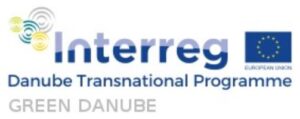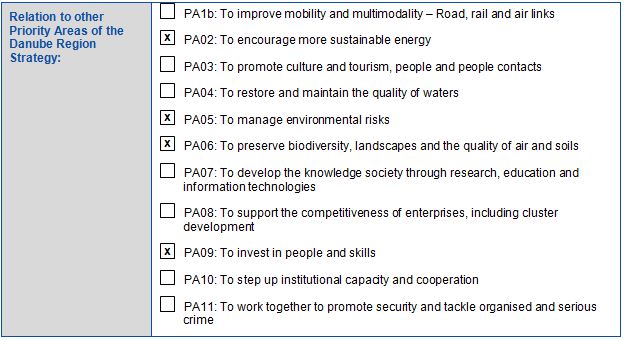BASIC PROJECT DATA
Project ID: PA1A130
Project website: www.interreg-danube.eu/green-danube
NEED AND ADDED VALUE FOR THE DANUBE REGION STRATEGY
Medium and long term perspective of Inland Waterway Transport (IWT) in the European Union highlights that the market of this sector will grow with about 80% until 2040 compared to 2010. Without policy intervention, in the year 2020 the average emission level of air pollutants of inland navigation vessels will in many cases be higher than that of trucks. The transport sector is recognized as a major contributor to emissions, therefore it is important to support environmentally sound transport modes like inland waterway transport.
The challenges identified in Danube navigation explain in part the huge discrepancy between the Rhine and the Danube (EU Strategy for the Danube Region: ”Cargo volumes transported on the Danube are only between 10% and 20% of those carried on the Rhine”) and it became imperative to address the need for a common transnational approach to better exploit the Danube potential by enhanced multimodality and modernisation of the fleet (EUSDR Priority Axis 1a) to reduce the negative impact of emissions.
OBJECTIVE(S) OF THE PROJECT
The GREEN DANUBE consortium (10 highly experienced partners from most Danube riparian countries and 6 associated strategic partners, international organizations, river commissions and national ministries) addressed this major challenge to strengthen environmentally-friendly, safe and balanced transport systems by adoption of a three level approach which targets and focused on:
- institutional capacity building by active involvement in pollutant emission reduction along the Danube through measurements of emissions,
- organizational capacity building and cooperation in the Danube sector for investigation and assessment of existing green technologies and best practices and providing tailor-made innovative solutions and
- individual capacity building by testing the environment information centres through pilot actions that raise the intensity of cooperation between the Danube riparian countries, ultimately ensuring long-term transnational cooperation.
CONDUCTED PROJECT ACTIVITIES
The project activities included:
- The capacitation consolidation of regulating authorities on Inland Waterways with regard to compliance with the new standards pertaining to pollutant emissions by:
- Performing a study on present practices and procedures and developing action tools, and
- Developing transnational procedures to determine and comply with pollutant emission standards.
- Reduction of emissions by using environmentally–friendly technologies by elaborating a study on present fleet analysing types of engines, lifetime of vessels, fuel consumption and gas emissions.
- Development of navigation on the Danube by limiting the negative impact of transport systems on the Danube ecosystem by elaborating a transnational strategy for an adequate management. This should ultimately lead to the limitation of pollutant emissions in the Danube corridor.
TRANSBOUNDARY IMPACT
Acting as a policy driver for a stronger multilevel cooperation, GREEN DANUBE guaranteed the replication of project outputs in the entire Danube region and beyond.
PROJECT BENEFICIARIES / TARGET GROUPS
National Public Authorities, International Organisations, Interest Groups including NGOs, General Public, Sectoral Agencies
STATUS AND TIMEFRAME
Start date: 01.01.2017
End date: 30.06.2019
The project is already concluded.
FINANCING
Total budget: 1,586,244 EUR
EU funds: 1,267,897.40 EUR (ERDF – European Regional Development Fund)
80,410.00 EUR (IPA – Instrument for Pre-Accession Assistance)
funded by Danube Transnational Programme (DTP) 2014 – 2020 (Priority Axis 3: Better connected and energy responsible Danube region; Specific Objective 3.1: Support environmentally–friendly and safe transport systems and balanced accessibility of urban and rural areas)
National funds: 237,936.60 EUR
PROJECT TEAM
Project leader: CERONAV – Romanian Maritime Training Centre
(website: https://www.ceronav.ro/)
Address: 69A Pescarilor Street, 900581, Constanta / Romania
Project partners:
- Pro Danube Management GmbH – Austria
- Black Sea – Danube Association of Research and Development – Bulgaria
- Inland Navigation Development Centre Ltd- Croatia
- Development Centre for Ship Technology and Transport Systems – Germany
- National Association of Radio Distress-Signalling and Infocommunications– Hungary
- The Regional Environmental Centre for Central and Eastern Europe- Hungary
- Danube Delta National Institute– Romania
- Association of Cross Border Cooperation„Lower Danube” – Romania
- Danube Competence Centre – Serbia
Associated Strategic Partners:
- Danube Delta Biosphere Reserve Authority – Romania
- General Directorate for Water – Hungary
- Directorate for Inland Waterways – Serbia
- Danube Commission– Hungary
- Executive Agency Maritime Administration – Bulgaria
- Ministry of Transport – Romania
PROJECT ENVIRONMENT
STRATEGIC REFERENCE
The project addressed the environmental pollution caused by inland waterway transport emphasized in different European policies, strategies and initiatives, such as:
- NAIADES II
- European Strategy for the Danube Region
- White Paper – Roadmap to a Single European Transport Area – Towards a competitive and resource efficient transport system
EUSDR EMBEDDING
EUSDR COMPLIANCE
META DATA
Data provided by: Vasile Pipirigeanu (CERONAV-Romanian Maritime Training Centre, Romania) – 28.09.2017
Last updated by: viadonau – 14.08.2019
Download pdf




